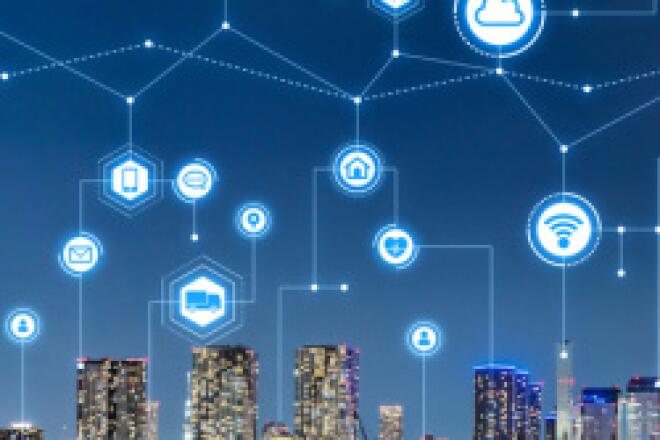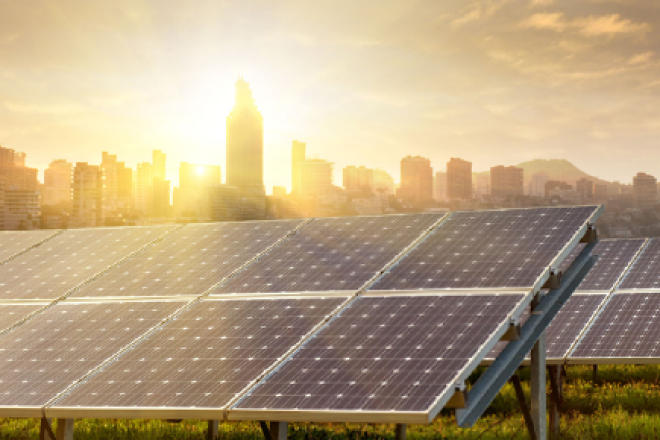
Smart Cities: We’re All In This Together
What is a “smart city”?
 A “smart city” is a city that harnesses digital technology and intelligent design to create a sustainable city. Services like power or public safety are seamless, efficient and provide for a high quality of life for citizens. A smart city does this by collecting data from places like street lights, building sensors and from citizens in their interactions with city services. It would share operational data across city agencies to reduce costs and improve efficiencies. Finally, it would communicate that data to city analysts to make city services more efficient and responsive to citizens’ needs. The goal is to improve the quality of life for city residents and streamline city operations.
A “smart city” is a city that harnesses digital technology and intelligent design to create a sustainable city. Services like power or public safety are seamless, efficient and provide for a high quality of life for citizens. A smart city does this by collecting data from places like street lights, building sensors and from citizens in their interactions with city services. It would share operational data across city agencies to reduce costs and improve efficiencies. Finally, it would communicate that data to city analysts to make city services more efficient and responsive to citizens’ needs. The goal is to improve the quality of life for city residents and streamline city operations.
We're all in this together.
Creating livable, sustainable cities is a major challenge of the 21st century as an increasing amount of the world’s population resides in urban areas. According to the United Nations, currently half of the world’s population lives in cities. By 2050, the UN projects, two-thirds of the world’s 9.7 billion people will dwell in cities.
Consider the benefits already being realized by various cities pursuing different smart city improvements:
- Providing universal internet access, saving citizens money. New York’s LinkNYC program is transforming 7,500 former payphones into communication hubs offering free gigabit-speed Wi-Fi for internet access, phone charging and national calls, paid for by advertising.
- Creating better-paying, skilled jobs by implementing smart technologies. Chattanooga modernized its grid, reduced power outages and offered its citizens high-speed internet service. A university study showed these improvements created at least 2,800 new jobs, attracted new businesses and provided an $865.3 million boost to the local economy.
- Streamlining city services for quality of life and economic growth. San Jose is using air, sound and climate sensors to feed an internet-based platform. It focuses on improvements to public safety, transportation, public health, energy use and economic growth. The city is sharing best practices and lessons learned with other cities.
- Reducing urban impacts on the environment. Boston’s solar-powered benches enable citizens to charge their cell phones in public. They also provide local environmental data that is used to improve Boston’s livability.
- Improving public transportation to aid efficient mobility and reduce traffic. Cities are integrating intelligent transportation management software and roadway sensors that monitor freeway conditions and can re-route public transit when necessary. New transportation apps are being developed for trip-planning, navigation and smart parking. Trip-planning apps enable users to find the quickest route to get where they’re going on public transit. Navigation apps display real-time traffic and point drivers to less congested routes. Smart parking apps help drivers find open spots, reducing time spent circling downtown blocks.
How does smart grid enable smart cities?
Modernizing our electric grid through smart grid enhancements is an integral first step to enabling smart cities. Making renewables like rooftop solar power more realistic is a game changer for sustainability. Dirty energy produced close to cities contributes to unhealthy air quality. Smart grid enables integration of renewables and allows production of clean energy close to where it is needed.
 Smart grid enhancements also allow better integration of new technology like electric vehicles, which, in turn, creates a bevy of possibilities down the road for urban areas. Future possibilities would include city-wide zero-emissions transportation and electric vehicles that act as power storage in case of emergencies.
Smart grid enhancements also allow better integration of new technology like electric vehicles, which, in turn, creates a bevy of possibilities down the road for urban areas. Future possibilities would include city-wide zero-emissions transportation and electric vehicles that act as power storage in case of emergencies.
Lastly, smart grid helps consumers access their energy data. Two-way digital technology makes data more accessible to consumers and city services. This enables utilities to offer new pricing programs that can lead to increased energy efficiency. Additionally, smart grid results in more reliable power through better power outage management. Each of these components serve as building blocks for smarter cities.
Why should I care?
Cities play an important role in economic prosperity, and they offer rich cultural resources and experiences. They attract businesses, create jobs and offer educational, recreational and entertainment opportunities. Their benefits – and their fate – affect not only city residents but everyone in the region, including those who live in suburban, exurban and rural areas.
 The trend towards urbanization, however, puts pressure on existing city services and systems. More people mean more complications for public safety and health, transportation, energy and water, among others. Much like electrical grid modernization efforts, decisive action is needed to revitalize our cities and the opportunities they offer.
The trend towards urbanization, however, puts pressure on existing city services and systems. More people mean more complications for public safety and health, transportation, energy and water, among others. Much like electrical grid modernization efforts, decisive action is needed to revitalize our cities and the opportunities they offer.
Cleaner, less polluting cities promote a healthier environment for residents and visitors. More intelligently and efficiently run city services attract new businesses, foster economic development and create jobs. Universal access to high-speed internet-based information and services supports inclusiveness, education and citizen engagement.
In the big picture, healthy, vibrant, prosperous cities contribute to the United States’ national competitiveness and economic security. Simply put, smart cities mean progress and progress means a better future.
To learn more, you can visit these websites:
Download this fact sheet.
Watch the video.



